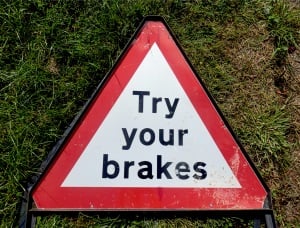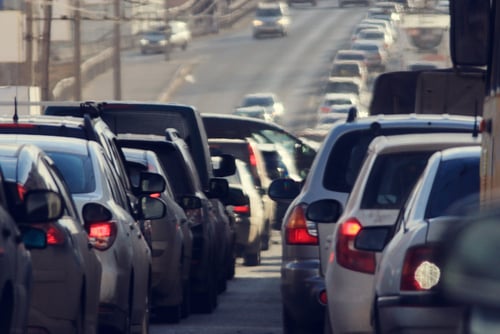Why does my front end shake while braking?
A not-uncommon question that mechanics are asked concerns “why does my front end shake while braking”?

The car & truck landscape looks very little like it was when we were growing up (or our parents). It used to be true that 100,000 miles were a milestone you could hold up with pride that your car lasted a long time. That’s not close to being true today. Now, it’s much less surprising to see cars and trucks pass 200,000 miles without thinking about retirement, though that number is still only around 1% of all vehicles. It’s also true that it depends on the model, as there are some particular vehicles with a well-deserved reputation for being more likely to give you a long driving life.
![]() Whether you’re driving a Ford Fiesta or a Honda Pilot, the one commonality between them is that the chance of getting 200,000 miles or more out of them increases the better you take care of them. And since new cars cost, on average, more than $45,000 (!), it’s a smart move financially to invest the time and money to properly maintain your vehicle. In today’s economy more and more owners hang onto their older cars because they can’t afford a new one.
Whether you’re driving a Ford Fiesta or a Honda Pilot, the one commonality between them is that the chance of getting 200,000 miles or more out of them increases the better you take care of them. And since new cars cost, on average, more than $45,000 (!), it’s a smart move financially to invest the time and money to properly maintain your vehicle. In today’s economy more and more owners hang onto their older cars because they can’t afford a new one.
If we agree it’s a good idea to do this, the question becomes - what are the most important things to take care of to get the most life out of the older car you already have?
When owning and maintaining an older car, there are three priority areas that need to be addressed, and they seem to track the elimination of risk. What this means is, that the most important are the things that directly impact safe driving for you and others, followed by things that dictate whether the vehicle will operate at all are as follows, followed lastly by normal maintenance items that prolong the effective life of the vehicle:
The first priority should be items that may cause unsafe operating conditions when driving your vehicle. This includes your car’s braking system, tires, steering system, and what we call “the driver vision system” which is clarity of all glass and windows and windshields free of cracks or anything else that would obstruct vision.
The second priority would include maintenance on things that will leave you stranded or cause other components such as the engine to fail. This includes radiator hoses, fuel lines, constant velocity (CV) joints, clutch fan, and timing belts.
The third priority is simply doing normal maintenance like changing the engine oil, transmission fluid, and engine coolant.
For older vehicles, we would recommend taking a proactive systematic approach to take care of your older vehicle:
Change the oil every 3, 000 to 5,000 miles which is fine for most vehicles. An oil change is cheap insurance because it removes grit and combustion by-products that end up in the crankcase and can cause premature wear.
Brakes are one of your vehicle’s most important safety features. Replace brake pads and shoes when they wear out. Resurface or replace brake rotors or drums if scoring is seen or if pulsating is felt when stopping. Resurfacing these items can often be done which will save the cost of replacing them.
Rubber deteriorates over time. A broken timing belt or a bursting cooling system hose can leave you stranded. Additional engine damage can result from a broken timing belt. Most modern engines with aluminum cylinder heads can be damaged from over-heating the engine just one time. It is better to replace these parts before they fail.
Coolant and automotive lubricants collect dirt, metal, and other contaminants causing parts to wear, hoses lines to deteriorate and radiators to clog. Check fluid levels periodically and top them off as needed. Transmission fluid is a lot cheaper than a new transmission.
It’s funny to say, but steering is important. Replace worn steering system components like ball joints, tie rod ends, and stabilizer bushings to prevent dangerous failures which can result in an accident. Noises heard when going over bumps or when turning the steering wheel could be a hint that your vehicle has broken or worn steering system parts.
CV joints often wear out on older front-wheel and all-wheel drive cars. It is crucial that you replace them before they fail because they connect the drive shaft to the wheel axles. CV stands for “constant velocity”, an important component for transferring power from the engine to the wheels.
The suspension can be treated, sometimes, as an afterthought. Shocks, struts, and springs compress and release hundreds of thousands of times over the years and cause them to weaken. These parts are essential for road handling, cornering, and cushioning you from bumps, jolts, and vibration. Worn or broken suspension system components can cause accidents or vehicle rollover in the right driving conditions. Priority should be given to replacing any needed parts.
Periodic alignment checks and adjustments when necessary can save you hundreds of dollars over the life of your vehicle. If the alignment is not perfect, excessive tire wear and premature tire failure can result.
Keep your tires inflated to the correct pressure for safety, even tire wear, and maximum tire life. Proper tire inflation can also improve your gas mileage by as much as 3 percent according to the U.S. Department of Energy.
Like NFL quarterbacks not named Tom Brady, time is the undefeated opponent. You can maintain your vehicle to a master mechanic, but unless you actually are one, there will come a time when it will be worth considering replacing your older vehicle with a new(er) one. I say newer because it’s usually more cost-effective to buy a vehicle that’s only a couple of years old than it is to buy a brand new one.
When should you bite the bullet and do this? There is no easy answer to the question of when to get rid of your older car. There are different factors like reliability, vehicle use, and personal finances that enter into these decisions. A complete inspection by a qualified mechanic can help you make this decision based on what they find and how expensive a present or a future repair may be.

A not-uncommon question that mechanics are asked concerns “why does my front end shake while braking”?

Diesels are more popular in Europe than gasoline-powered cars, accounting for more than 50 percent of all cars sold. Yet, in the United States, the...

"Peak oil" is a term used by people who pay attention to the energy sector. It's also used by entrepeneurs like T. Boone Pickens. If this is the...